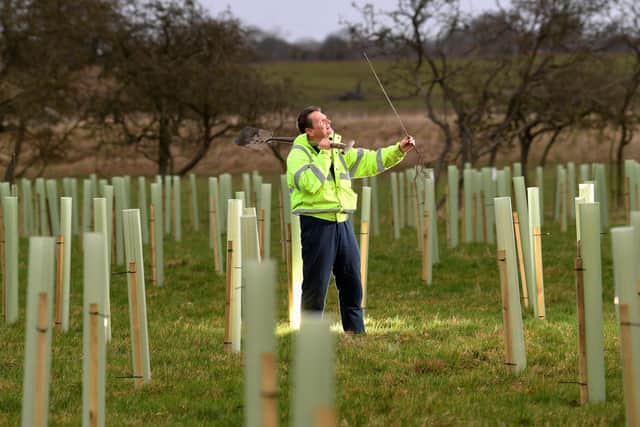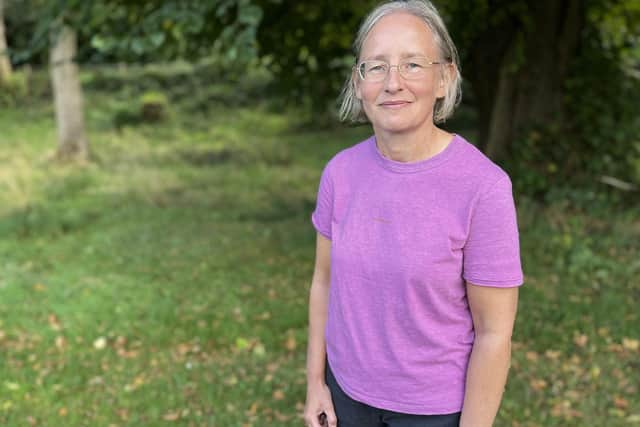Land Scotland: Why tree planting is the solution to many problems, but not all - Dr Ruth Mitchell
Tree planting is big. Governments across the UK and beyond have ambitious tree planting targets. The Scottish Government's vision is to expand woodland cover to 21 per cent of Scotland by 2032. Why? Trees soak up carbon, provide shade, a home for biodiversity, green space and timber.
But depending on what our goals are, it’s not always that simple. For example, when we look at how trees interact with soils in the initial decades following tree establishment (timescales relevant to key Scotland/UK net zero target dates of 2045/2050), our research has shown that planting trees on carbon rich soils – that’s soils with lots of organic material in it, such as moorland, which we have a lot of in Scotland’s uplands – could result in an overall release of carbon.
Advertisement
Hide AdAdvertisement
Hide AdThat’s because disturbing that carbon-rich soil releases carbon and, depending on how fast growing the trees are, it can take decades before the amount of carbon emitted is balanced by what’s absorbed by the trees.


Even when the tree planting work itself doesn’t disturb carbon-rich soil much, we’ve seen that carbon can still be released. So, we need to think both about what types of trees we’re planting and the types of soil we’re planting them on to get the best results.
A solution could then be to plant faster growing trees, like Sitka spruce, which would soak up more carbon faster. But if there is intense ground preparation works during planting, the new trees might not absorb more carbon than is released from the soils by 2045-50.
We could also lock up more carbon faster by planting trees on more mineral rich soils, but this could put tree planting into conflict with arable crop production on prime agricultural land.
However, we can plant more trees into agricultural areas, through schemes like agroforestry, planting trees alongside burns and rivers and within fields as windbreaks. We’ve been doing this at our research farm Glensaugh, in Aberdeenshire, as part of our Climate-Positive Farming Initiative, where tree cover is now 17 per cent of the site.


But still, even if national tree planting goals are met, they will only account for around 10 per cent of Scotland's emissions and only 1 per cent of the UK's emissions.
Trees are not all about carbon, however. At Glensaugh, they’re also about boosting biodiversity, which is another major Scottish goal. We’ve shown that oak trees support 2,300 species, that’s a lot of biodiversity. But we still need to take care in where we plant trees. If we plant trees in some moorland and grasslands, we could damage important habitats of protected species like curlew and species rich grasslands.
How woodlands are planted and managed is also important. Dense, uniform plantations tend to support less biodiversity than forests with more species or structural diversity. Woodlands with greater variety can also be more resilient. Having more trees species spreads the risk, so if one tree species is impacted by pests, disease, or climate change, other trees species will survive, continuing to support biodiversity and provide other services.
Advertisement
Hide AdAdvertisement
Hide AdThis can be harder in commercial forestry, but can be possible either within stands or by thinking about diversity at a landscape scale. If we target tree planting, along rivers, for example, we can stabilise riverbanks, stop soil erosion and fertilisers draining into waterways and help keep them habitable for the likes of Scottish salmon, which come under stress in higher temperatures.
Ultimately it all depends on what our goals are. Tree planting is great. But it’s a balancing act, between tree species, growth rates, where you plant them and over what timescale you're looking for a benefit. There’s no simple answer. But get it right and we all benefit.
- Dr Ruth Mitchell is the plant soil ecologist at The James Hutton Institute
Comments
Want to join the conversation? Please or to comment on this article.